On Gold Mountain Read online
Page 39
Not since the railroad pricing wars of the 1880s had Los Angeles experienced such prosperity and change. That first Christmas after the war, downtown was gaudy with lights and decorations and families together again. Department stores filled their windows with fantasy displays of everything from electric trains to washing machines. Santas, puffy with padding and fake beards, handed out strings of rock candy and lollipops to rosy-faced children. GIs still in uniform prowled the sidewalks in groups or honked their way down congested streets in their jeeps. Women, basking in the radiance of early pregnancy, window-shopped past the Broadway, Silverwoods, and Barker Brothers. At night, the women linked arms with men they’d thought they’d never see again, and stood in line to take in a movie at the Orpheum, Lowe’s State, Pantages, Paramount or the Million Dollar.
During these postwar years, Chinatown mirrored the growth of the rest of the city when, from 1940 to 1950, the population increased from 5,300 to 8,000. For the Chinese this boom was fueled by the War Brides Act of 1945, the Act of August 9, 1946 that put Chinese wives of U.S. citizens on a nonquota basis, and the Displaced Persons Act of 1948. So, while the official quota for Chinese immigrants still stood at a mere 105 a year (by contrast, Poland had an annual quota of 6,524), over 7,000 Chinese women entered the U.S. between 1946 and 1953 as war brides and another 3,465 Chinese students, visitors, and seamen were granted permanent resident status as “displaced persons.”
Many Chinese—both young and old—became citizens: Chuen Fong, Fong See’s eldest son from his second family, who had been inducted into the army one month before the end of the war, was naturalized after he was released in 1947. Fong Yun was naturalized a year later. Like other American GIs, the Chinese veterans took advantage of new opportunities for education and housing. By the spring of 1949, 3,610 Chinese Americans across the country had enrolled in American colleges and universities, more than ever before. With these successes, education became recognized and accepted as a way out of Chinatown.
Although the Supreme Court had declared restrictive covenants unconstitutional as far back as 1917, California had continued to enforce them. In May 1948, a ruling passed the state legislature that effectively banned restrictive covenants barring Chinese and other minorities from buying property; such covenants would no longer be enforceable in state court. This—combined with the influx of immigrant women—changed the structure of Chinese communities. American-style nuclear families developed and settled in traditionally white suburbs to find superior housing and schools.
The miscegenation laws had also hung on with tenacity. As a quarter-Chinese, Pollyanne, Ray’s daughter, still fell under the state’s racial code. Like her parents before her, she and her Caucasian fiance made the trip to Tijuana. Two weeks later, on October 1, 1948, the California Supreme Court finally declared the miscegenation laws unconstitutional. The following year, the L.A. County Marriage License Bureau issued eighty licenses for interracial marriages, of which eleven were for marriages between whites and Chinese. Bennie’s daughter, Shirley, who, along with her sister, had been sworn to secrecy about her Chinese background during the war, was the first in the See family to be married to a Caucasian in the United States.
But attitudes were stubborn. “After World War II, we were considered either dumb or stupid, because whatever we earned we gave back to our parents,” recalled David Lee. “Once we got out of our territory, we were shell-shocked. They didn’t want us. I remember Sammy Lee, the Olympic diving champion. He came back a captain or a major and he couldn’t buy a house in Orange County. If you died, you couldn’t be buried, because the cemeteries were segregated.” Those who moved into new neighborhoods scouted things out ahead of time. Tyrus and Ruth Wong, for example, asked the existing owners to inquire if anyone would object to having a Chinese family in the neighborhood.
Wilbur Woo, who had lived as a child behind the Leong residence in the City Market Chinatown, was one of fifteen Chinese students at UCLA: “After the war, some of us became professionals—doctors, lawyers, maybe a few owned supermarkets in black areas. But things hadn’t really improved. I remember driving to Sacramento in the late forties and being stopped by a policeman. The first thing he asked was ‘What restaurant do you work at?’” Choey Lau, Fong Yun’s eldest daughter, married an Army Air Force pilot who couldn’t get a civilian job because he was Chinese. In 1951 they would move to Hawaii, where he would be hired by Aloha Airlines, which had been founded by a Chinese.
It didn’t matter if you were important, either. In New York, when the chief Chinese delegate to the United Nations knocked on the door of the wrong hotel room, the woman who answered wordlessly handed him her laundry. Closer to home, James Wong Howe, the cinematographer, took a portion of his Hollywood money to open a Chinese restaurant. When a photographer came to take publicity shots of the exterior, Howe walked over and asked, “Can you move over just a little bit so it will make a better composition?” The photographer sneered. “What the hell do you know about photography? Why don’t you go back in the kitchen and do some cooking?”
The residents of the last block of Old Chinatown remained resolute in the face of any change. The old businesses—the F. See On Company, the F. Suie One Company, Soochow Restaurant, the Chew family’s curio shop, and the herbal emporium—still held sway. Along the small alleyways bisecting the block, wives still bought their pork at the Sam Sing Butcher Shop, city pols stopped in for drinks at the three-thousand-year-old carved bar in Jerry’s Joynt, the religious sought advice and good luck at the Kong Chow Temple, and bachelors bought entire meals at See Yuen for a quarter. The Lugo House continued as a refuge for single men. But the once-grand Pico House had become a flophouse, and in the Plaza on Sundays, evangelists hurled hellfire and brimstone at a sorry collection of derelicts, drunks, and hobos.
In a city that prided itself on the new, it seemed that everyone had a plan to make Los Angeles bigger, better, cleaner. In the last years of the decade, many of the city’s landmarks would come down. Old China town, an eyesore to some, also came under fire. On November 6, 1946, City Attorney Ray Chesebro filed condemnation proceedings in Superior Court against the twenty-two property owners in the last surviving block of the city’s original Chinatown. His plan was to raze the block and create a park to “beautify” the approach to Union Station. In coming months this idea would change once again, as much of the area was allotted to the widening and opening of roadways in connection with the building of the Hollywood Freeway.
The residents of Old Chinatown greeted the news with a calmness that reporters found disquieting. But many, like Fong See, were old-timers who had lived through the Driving Out and had been shuffled from place to place at the whim of the larger Caucasian populace since they’d first set foot on the Gold Mountain. A reporter from the Daily News spoke with Fong See, who, it was noted, was “patiently philosophical.” (The rival paper, the Los Angeles Times, supported this observation with photographs capturing the “venerable old man” appearing “unexcited” and “unperturbed” about the condemnation proceedings.) “Man requires but little space—less space than this cubicle in which I stand,” Fong See told the Daily News. “And when my time comes, they will crowd me into less space than this. I have lived well, I am ready for what tomorrow holds.” Yet another reporter asked Fong See if he had made much money in his fifty-eight years on Los Angeles Street. “There are three carloads of it piled up in the back,” the old man laughed, “but I don’t know what to do with it.” The reporter commented that this was an example of “subtle Oriental humor.”
Yet another interviewer seemed to speak with a very different man. “Allee time change,” Fong See mused. “Allee time city glow and change. Move many time. Allee time people think change sad. Not sad. Change must come.”
Photographers roamed the streets of Old Chinatown. One caught Fong See in his long, embroidered mandarin robe, posing with a feather duster before a statue of Buddha in meditation. Another captured a child climbing on one of the stone dogs
that stood before the entrance to the F. Suie One Company. The camera lens froze the incongruities throughout the enclave—a carved figure representing the transcendence of man from the Lower World to a Higher Civilization next to a sign for “Rum and Coke—40 cents.” Along this last remaining block, people wondered what they would do if they really did have to move.
In 1946, after the Oki family returned from the relocation camp, Stella, Eddy, and Richard moved into the basement of the F. Suie One Company, where Dragon’s Den had once been. (Ted had joined the merchant marine.) Junk, which in the family could mean anything from antiques to piles of used lumber, occupied half the space. The other half was partitioned off for living quarters. Benji and Tyrus’s murals of the Eight Immortals and the dragon still clung to the walls. Beautiful pieces of Chinese art enlivened dark corners. In the kitchen, the family took their baths in the prep sinks; rats still made their nests in the exposed rafters and scuttled along water pipes.
Some people might have seen this paradox—living in a rat-infested basement surrounded by expensive things—as inappropriate. But what constituted inappropriateness? Fong See had grown up in the close quarters of village life. His children had been raised in the close quarters of immigrant life. Now Eddy carried on that tradition. His family had always lived in small places—out of habit, thrift, or necessity. Eddy, Stella, and now their son learned to shut themselves off and establish their own space. They learned how to be in the same room and not talk to each other.
The job at See Manufacturing hadn’t worked out for Eddy. His brothers had put him in charge of the assembly line, but he had realized they were never going to let him do anything really important. After working day after day behind a table saw, he was also overcome by the drudgery of the work. So he’d quit and now simply walked upstairs to help Ming in the store. Eddy set up a table for making jewelry just inside the front entrance. It was a much calmer life, one that helped relieve his ulcers, which still hadn’t healed from the Dragon’s Den days.
Stella also renewed her interest in the F. Suie One Company. As a teenager she had kept Ticie company in the store on Kip Street. When Stella was first married, she had walked over to the location on Wilshire every day to visit her motherin-law. Stella had done odd jobs—a little polishing, dusting, sweeping. Now that Richard was in high school, Stella once again spent much of her time in the store, where her art background served her well. For years she worked on the restoration of a coromandel screen, pressing filler into the cracks, recarving it, replacing the broken slivers of mother-of-pearl, and laying on fine coats of black lacquer.
Richard celebrated his sixteenth birthday in the basement of Dragon’s Den. He was one-quarter Chinese, and his looks showed elements from both his Asian and Caucasian blood. He was a sweetly handsome boy, slightly taller than his cousins and uncles and just a touch huskier. His hair was a soft and silky shade of black. He had an endearingly shy smile. But perhaps his most striking feature was his green eyes, of which he was immensely proud.
Richard began to live a triple life: partly with Benji Okubo, partly in the white world, partly in Chinatown. During the summer and on vacation, Richard worked with Benji—still gruff and wild under the domesticating influence of his wife, Chabo, whom he had married in the internment camp—on landscaping jobs. Benji and Richard would drive out to Ava Gardner’s or Elizabeth Taylor’s house, then trim, cut, shape. When they were done, they’d buy a six-pack of beer, and sit and talk.
For nine months of the year, Richard was in school. Rather than go to Belmont or Poly with the other kids from Chinatown, Richard enrolled at John Marshall High, near Silverlake, where his friends were the only Jews in a predominately Gentile school. He hung around with a guy who wanted to become a doctor. Their affiliation had less to do with being ethnically different from the others—which they certainly were—than it did with simply being different. They weren’t part of the in-crowd. They weren’t popular. They certainly didn’t date or hang out with girls. Instead they competed against each other for grades and talked about where they wanted to go to college.
After school, Richard went back down to Chinatown. He worked in the store, doing many of the jobs that his father and uncles had done as teenagers. He drilled holes in the bottoms of porcelain vases and wired them for lamps. He put together furniture when it arrived from Asia. He spent time—as did everyone in the family at one time or another—on the coromandel screen. He became convinced that he didn’t want to spend his life working in the store like his uncle and father.
For the first time, Richard began hanging out with his cousins (Fong Yun’s children) and his half-aunts and -uncles (the sons and daughters of Fong See), as well as a few of the young men along the block—Albert Wong, the kid from the Sam Sing Butcher Shop, and Allen Mock, the son of a gambler. Although they saw him as definitely Caucasian, they accepted him because he was a relative.
The boys, Richard included, were like so much hollow bamboo, Chinese on the outside, hollow on the inside. They didn’t fit into the world of their parents. They certainly didn’t fit into the world of their white peers. They didn’t even fit in with girls in Chinatown. The basic philosophies didn’t mesh. The American work ethic—success, occupational prestige, educational attainment, the expenditure of wealth to compete with the Joneses—just didn’t jibe with how these boys had been raised: to save for buying trips and banquets, to work for the family and not for yourself, to think of returning home to China, and not to disgrace yourself in front of Americans or bring harm to the family through your actions.
Like their fathers and grandfathers before them who had suffered from having their culture belittled, so too did these young men. The larger world spoke loudly and clearly: You are different. What you feel has no value. You are bad. You are dirty. You are unpleasant to live near. Consciously and unconsciously, they had heard, felt, and seen these things since the day they were born. Be careful. Watch out what you say. Don’t make a mistake. Their bodies, which should have been filled with all the hopes and dreams and spunk of young men around the world, were filled instead with a withering combination of insecurity and a what’s-the-use attitude.
But Richard didn’t think about these things when he climbed the stairs from Dragon’s Den to his grandfather’s apartment and a world that seemed purely Chinese. Straight-backed chairs lined the four walls of the main room. The old organ of the Methodist Mission still stood on its raised platform, and sometimes the younger kids pumped the pedals, creating horrible wheezing moans. Even without the organ, the noise level was always high. Nine people lived in this apartment: Richard’s grandfather, his wife, and their seven children, ranging in age from infancy to their early twenties. They were often joined by what seemed like half the population of Chinatown, who came over unannounced to sit and gape before the new television set—the first in the neighborhood. Over the cacophony of voices—babies crying, teenagers giggling and roughhousing, old folks calling out to each other in high-pitched tones—the set blared out wrestling or newscasts.
Richard didn’t pay much attention to his grandfather or Ngon Hung. His grandfather seemed fossilized. His step-grandmother—though just a couple of years older than his aunt Sissee—appeared ancient, with her crooked back and her shuffling steps. Carrying, birthing, and caring for seven babies had taken a toll. Following ghetto tradition, all of her children had been born at home—some easily, as when she went to the bathroom and the baby simply slipped out, and some—according to family story—with difficulty, as when she was home alone, in pain, and pushing for hours.
Richard grew familiar with the routine in this bustling household. Each month his grandfather called his children together to dole out ten dollars or fifteen dollars—their portion of Fong See’s family pot, now called an allowance in keeping with contemporary times. To May Oy, who was quiet and home-loving like her mother, Fong See might say, “Go out and buy something for yourself.” To his eldest son, Chuen, he would say, “You did a good job this week in
the store.” He might compliment Yun on his efforts in putting together a piece of furniture. To Sumoy he would say, “I understand you did a good job in school.” Other times he subtracted dollars, saying, “I heard you were mean to your sister,” or “You didn’t help your mother make joang.” To Jong Oy he might rail, “You think I don’t know when you sneak out at night to be with that military man? This is not the right type of person for my daughter. You will get nothing this month.” He was always sterner with the girls, hoping to control their modern ways with less money and harsh words.
Once they were older, Richard and the other guys went out. Chuen and Yun had a car—a World War II Jeep bought from army surplus—and they’d all pile in and roam about town for siu yeh, “midnight snack.” They drove to Van de Kamp’s on San Fernando Road for hamburgers, fries, and malts, or out west to Ocean Park for a pastrami-and-cole-slaw sandwich at Zucky’s, or to Micelli’s in Hollywood, where the Italian waiters treated Richard like a movie star, or simply down to Ninth Street by the City Market for noodles, dumplings, or a bowl of jook (rice gruel) seasoned with salted fish.
They visited Anna May Wong in her Chinese-style house with its moon gate, courtyard, and tall, narrow doors. These social calls—often with Sissee, Gilbert, Stella, and Eddy—brought out the very best in them all, as they remembered good times at Dragon’s Den. Sometimes others showed up—Tyrus and Ruth; Dorothy Jeakins (an old friend from art-school days and now an Academy Award winner for her costume designs); Norman Foster (the film director); James Wong Howe and Sanora Babb; and Katherine DeMille (the niece of Cecil B. DeMille). Anna May’s younger brother, Richard, would also be there, watching over his sister as he had done for so many years.

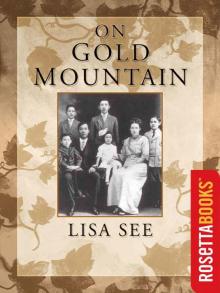 On Gold Mountain: The One-Hundred-Year Odyssey of My Chinese-American Family
On Gold Mountain: The One-Hundred-Year Odyssey of My Chinese-American Family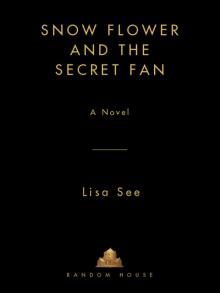 Snow Flower and the Secret Fan
Snow Flower and the Secret Fan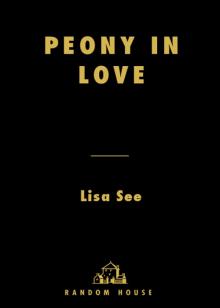 Peony in Love
Peony in Love Flower Net
Flower Net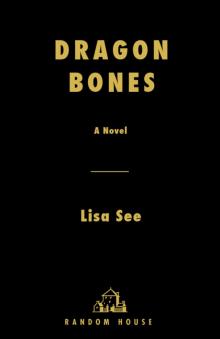 Dragon Bones
Dragon Bones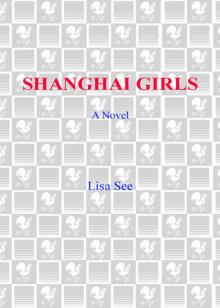 Shanghai Girls
Shanghai Girls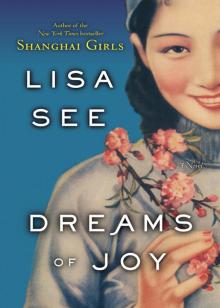 Dreams of Joy
Dreams of Joy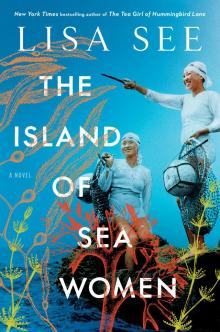 The Island of Sea Women
The Island of Sea Women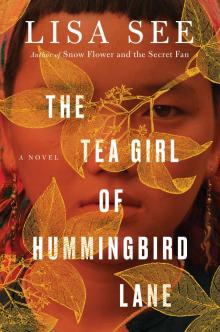 The Tea Girl of Hummingbird Lane
The Tea Girl of Hummingbird Lane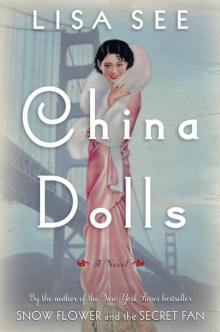 China Dolls
China Dolls The Interior
The Interior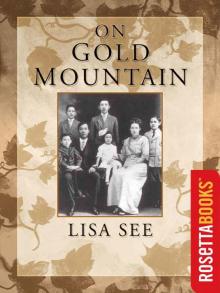 On Gold Mountain
On Gold Mountain